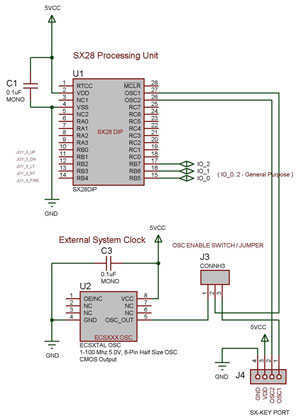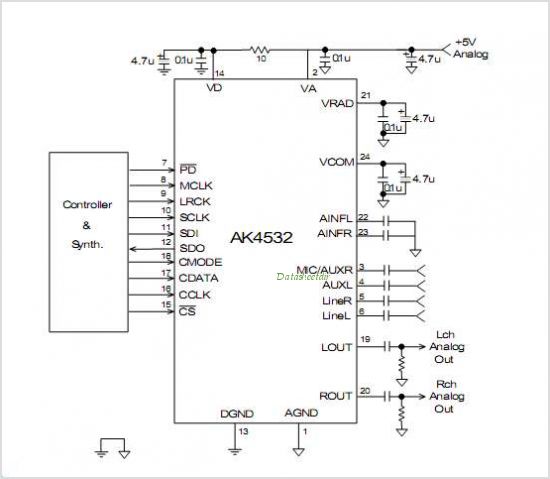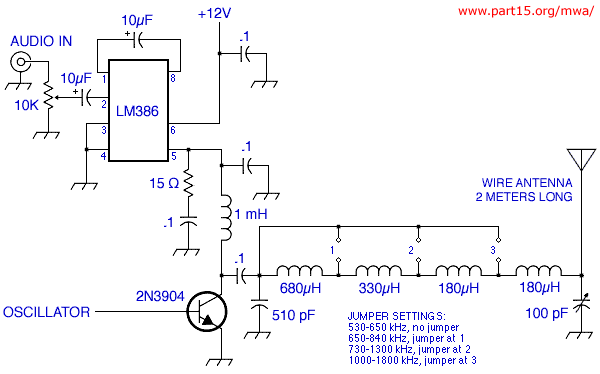
low distortion audio range oscillator

This oscillator generates low-distortion sine waves within a frequency range of 16 to 22,000 Hz.
The sine wave oscillator is designed to produce high-quality sine wave outputs with minimal distortion across a wide frequency spectrum. The operational range of 16 Hz to 22 kHz makes it suitable for various applications, including audio signal generation, testing equipment, and waveform synthesis in electronic circuits.
The oscillator typically utilizes a feedback loop to maintain stability and accuracy in frequency output. Common configurations include the use of operational amplifiers or dedicated waveform generation ICs. Key components may include resistors, capacitors, and sometimes inductors, which are configured to set the desired frequency and shape of the output waveform.
For instance, a Wien bridge oscillator configuration can be employed to achieve low distortion. This configuration relies on a bridge circuit that balances the gain of the amplifier with the feedback network, allowing for stable oscillation. The frequency of oscillation can be adjusted by changing the values of the resistors and capacitors in the feedback loop.
In addition to low distortion, the design considerations should also account for power supply stability, temperature variations, and component tolerances, which can affect the output waveform quality. Proper PCB layout and grounding techniques are essential to minimize noise and interference, ensuring that the sine wave output remains clean and usable for high-fidelity applications.
Overall, this oscillator serves as a fundamental building block in various electronic systems where accurate sine wave generation is critical.Producing low-distortion sine waves, this oscillator operates over the range 16 to 22000 Hz.. 🔗 External reference
The sine wave oscillator is designed to produce high-quality sine wave outputs with minimal distortion across a wide frequency spectrum. The operational range of 16 Hz to 22 kHz makes it suitable for various applications, including audio signal generation, testing equipment, and waveform synthesis in electronic circuits.
The oscillator typically utilizes a feedback loop to maintain stability and accuracy in frequency output. Common configurations include the use of operational amplifiers or dedicated waveform generation ICs. Key components may include resistors, capacitors, and sometimes inductors, which are configured to set the desired frequency and shape of the output waveform.
For instance, a Wien bridge oscillator configuration can be employed to achieve low distortion. This configuration relies on a bridge circuit that balances the gain of the amplifier with the feedback network, allowing for stable oscillation. The frequency of oscillation can be adjusted by changing the values of the resistors and capacitors in the feedback loop.
In addition to low distortion, the design considerations should also account for power supply stability, temperature variations, and component tolerances, which can affect the output waveform quality. Proper PCB layout and grounding techniques are essential to minimize noise and interference, ensuring that the sine wave output remains clean and usable for high-fidelity applications.
Overall, this oscillator serves as a fundamental building block in various electronic systems where accurate sine wave generation is critical.Producing low-distortion sine waves, this oscillator operates over the range 16 to 22000 Hz.. 🔗 External reference





